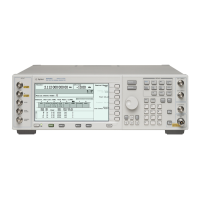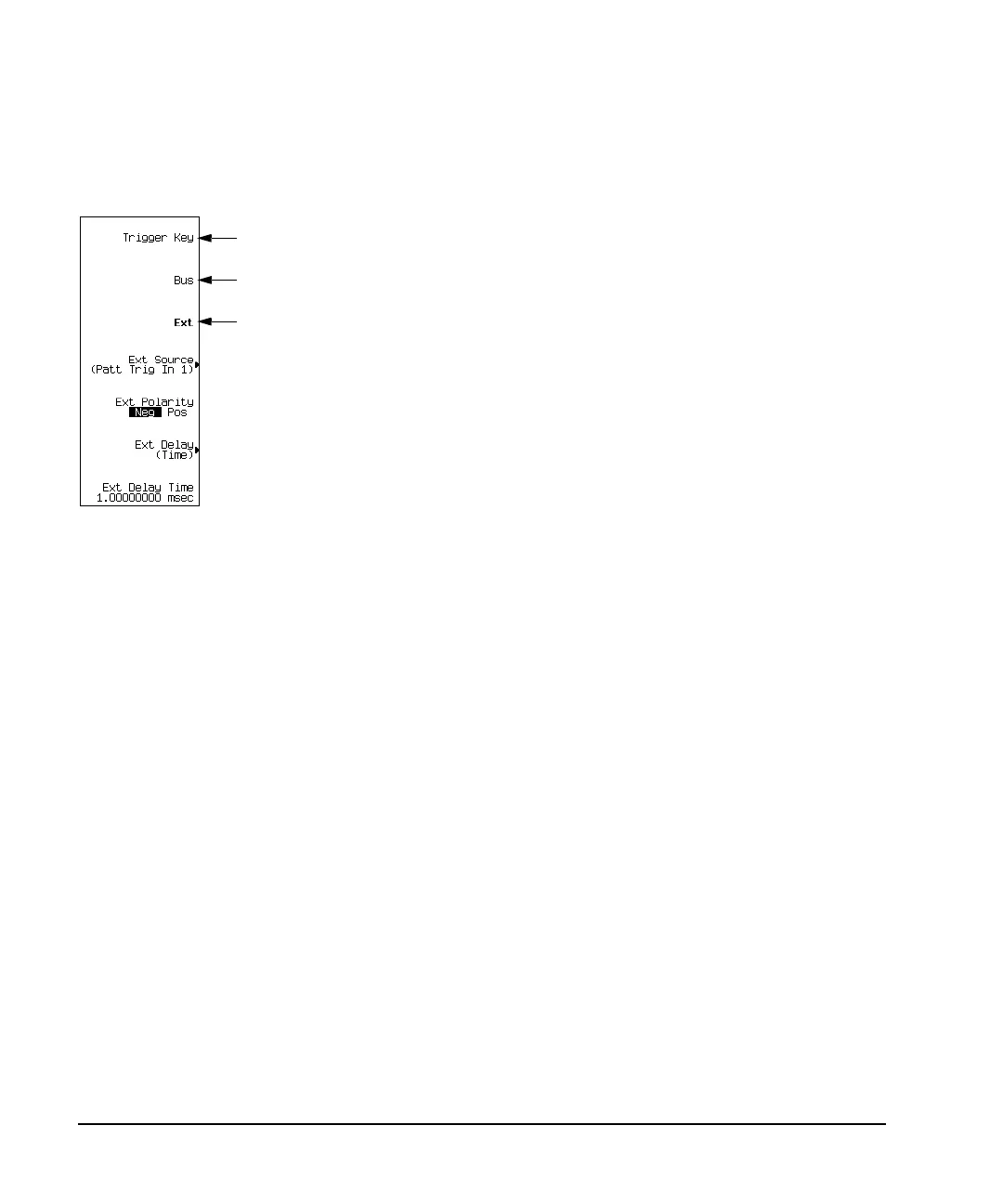146 Chapter 4
Basic Digital Operation
Triggering Waveforms
Source
The figure below shows the dual ARB mode trigger menu.
Mode and Response
The arbitrary waveform player provides four trigger modes; each mode has one or more possible responses:
• Single plays the waveform once. Arb formats have the following re-triggering options:
—
Off ignores triggers received during play; a trigger received after playback completes restarts the
playback.
—
On causes a trigger received during play to repeat the waveform after the current play completes.
—
Immediate causes a trigger received during play to immediately restart the waveform.
•
Gated causes the waveform to wait for the first active trigger signal state to begin transmission, then
repeatedly starts and stops in response to an externally applied gating signal (example on page 148).
You select the active state with the
Gate Active Low High softkey (see page 148).
In an ARB format, the waveform plays during the inactive state, and stops during the active state.
In real-time Custom, behavior depends on whether the signal uses framed or unframed data.
Because the ESG provides only unframed data, to transmit a framed data signal you must create an
external file that incorporates the framing and download it to the ESG (see the E4428C/38C ESG Signal
Generators Programming Guide).
— Unframed data transmits during active states, and stops during inactive states. The signal stops at the
last transmitted symbol and restarts at the next symbol.
— Framed data starts transmitting at the beginning of a frame during active states, and stops at the end
of a frame when the end occurs during inactive states. If the end of the frame extends into the next
active state, the signal transmits continuously.
The Trigger hardkey
A command sent through the rear-panel GPIB, LAN, or Auxiliary (RS-232) interface
An external trigger signal applied to either the PATTERN TRIG IN connector, or the PATT TRIG IN
pin on the AUXILIARY I/O connector (connector locations are shown in Figure on page 41).
The following parameters affect an external trigger signal:
• The source (Input connector) of the external trigger signal (see page 147)
• The polarity of the external trigger (described on page 148)
• Any desired delay between when the ESG receives an external trigger and when the
waveform responds to it (see page 147).

